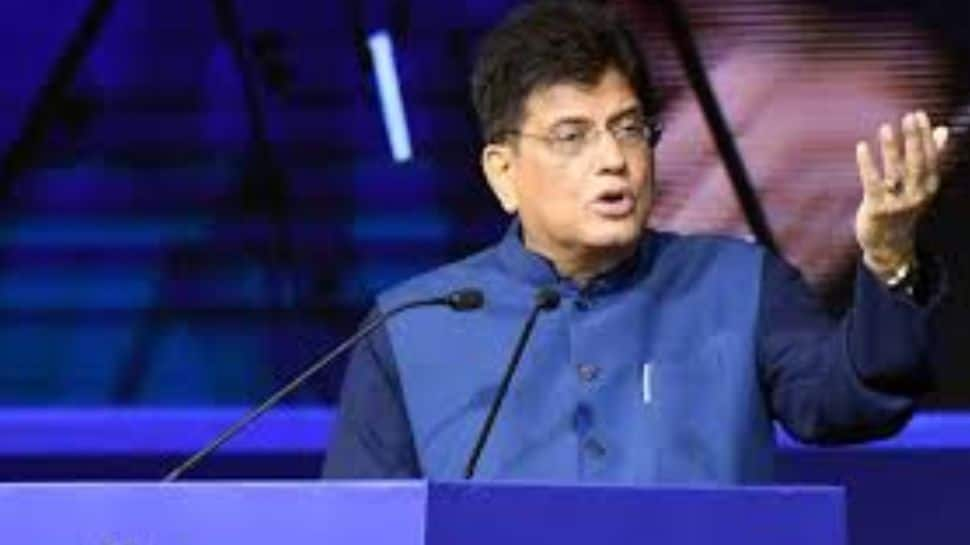Business
All work and no pay: US govt shutdown hits federal workers; forced to apply for loans to meet daily needs – The Times of India

US federal workers have begun to feel the heat of government shutdown as it enters its second week, as many have resorted to even taking loans to cover everyday expenses. Since October 1, hundreds of thousands of federal employees have been furloughed, while others deemed essential, including some military personnel, must work without pay.All work and no pay“We kind of feel like we’re like a bargaining chip to an extent,” a long-serving US Air Force employee told AFP. “We’re not getting paid because people in DC who are getting paid can’t get on the same page.”“Not only are we working without pay, we’re actually doing more without pay, because our civilian teammates have all gone home on furlough,” he added. “That’s not good for troop morale.”The first grave signs of the shutdown’s impact will be felt next week, when federal employees start seeing their paychecks affected. If no deal is reached by the end of the month, they could receive nothing in the following paycheck.“It’s very stressful,” said Marilyn Richards, a 46-year-old Air Force and Navy veteran in Missouri, who has been furloughed from her administrative support role at a federal agency.Richards, the main breadwinner in her household, explained the financial pressure the shutdown is causing. “For most of us who live paycheck to paycheck, you’re counting on your next paycheck to continue to keep the lights on,” she told AFP. “And that’s what I do.”‘Bridging the gap’The uncertainty caused by the shutdown has led some federal workers to turn to credit unions offering paycheck protection programmes.The Navy Federal Credit Union, which provided around 19,000 loans totalling more than $50 million during the 2018-2019 shutdown, has already begun seeing applications this time, according to a spokesperson.These loans help federal workers get through a few weeks without pay and ‘bridge the gap’ until the shutdown ends and back pay is received, Haleigh Laverty, a spokesperson for the Defense Credit Union Council, told AFP.Many credit unions are offering short-term, interest-free loans of a few thousand dollars for periods ranging from 90 days to six months. This support helps protect both employees and their credit scores.Among them is the Cobalt Credit Union in Nebraska, which serves around 120,000 members connected to Offutt Air Force Base, home to the US Strategic Command.“We still have active duty and a lot of essential positions on the base that have to report due to missions all over the world,” Cobalt Credit Union president and CEO Robin Larson said. The union has helped thousands through past shutdowns and has already received multiple loan applications since October 1.Struggle with mortgage While federal workers are hardest hit, the shutdown could also affect the private sector. Mortgage brokers warn that lending may slow down, and crucial services like flood insurance could be disrupted in coastal areas, forcing borrowers to turn to costlier private options.Alex St Pierre, a mortgage broker in Charleston, South Carolina, explained that government workers looking for a mortgage face additional pressures, including the threat of dismissal and delays to identity verification checks while their departments are closed.
Business
Tech spectrum tussle: US majors push Wi-Fi use for entire 6GHz band as Jio, Vi seek mobile allocation; Airtel, Qualcomm call for deferment – The Times of India

US technology giants Apple, Amazon, Cisco, Meta, HP and Intel have jointly opposed demands from Reliance Jio and Vodafone Idea to allocate spectrum in the 6GHz band for mobile services, instead urging that the entire band be reserved for Wi-Fi use, reported PTI.In a joint response to Trai’s consultation paper for the next round of spectrum auctions, the companies said technical and commercial readiness in the 6GHz band “is not established” for mobile services and asked the government to avoid setting timelines for auction of the 6425-6725 MHz and 7025-7125 MHz ranges.“We do not recommend setting timelines for any future auction of the 6425-6725 MHz and 7025-7125 MHz ranges for IMT… TRAI, together with the Department of Telecommunications, should review the allocation of the upper 6 GHz band following the outcomes of WRC-27,” the joint submission said, adding that any unused upper 6GHz spectrum should be made available for unlicensed use in the interim.The government has said 400 MHz of 6GHz spectrum is immediately available for auction, an additional 300 MHz will be available by 2030, and 500 MHz in the lower band will be delicensed for low-power applications such as Wi-Fi.Jio has demanded inclusion of the entire 1200 MHz available in the 6GHz band in the auction, even though the government has decided to delicense 500 MHz in the lower range. Vodafone Idea has sought the sale of 400 MHz currently available for use. Airtel has asked the government to defer auction of the 6GHz band due to concerns over device availability, equipment readiness and global harmonisation.Qualcomm echoed similar concerns, stating, “The upper 6 GHz band is critical for mobile growth in India… By deferring the auction… until after WRC-27, India safeguards its 6G future, aligns with global standards, and honours its leadership aspirations.”Telecom industry body COAI, whose members include Jio, Airtel and Vodafone Idea, opposed delicensing. “Delicensing is misleading and counterproductive… Licensed IMT spectrum ensures quality-of-service, predictable performance and nationwide scalability,” COAI said, warning that allowing unlicensed Wi-Fi deployments could reduce exchequer revenues and give “disproportionate advantage to foreign OTT players”.The newly identified 6425-6725 MHz and 6725-7125 MHz bands form part of the upper 6GHz range, while the 5925-6425 MHz band has been earmarked for unlicensed low-power applications.
Business
First Big Step Towards…: Goyal Meets Israeli President, Welcomes Launch Of FTA talks

New Delhi: Union Minister for Commerce and Industry Piyush Goyal on Sunday met with Isaac Herzog, President of Israel, to further strengthen the strategic partnership between India and Israel.
During the discussions, Goyal conveyed warm greetings from the people of India and highlighted opportunities for deeper collaboration across trade, investment, innovation, and technology.
During the meeting, Goyal shared the positive outcomes of the recently held Business Forum and CEOs Forum, which brought together business leaders from both countries. He also underscored the first major step towards Free Trade Agreement (FTA) negotiations, highlighting its potential to boost economic engagement and facilitate bilateral trade.
In a post on social media platform X, he wrote, “Honoured to call on H.E. @Isaac_Herzog, President of the State of Israel. Conveyed the warm greetings of the people of India. Our discussions covered the full spectrum of our strategic partnership, including trade and investment, science & technology, innovation, and deeper economic engagement.”
Goyal emphasised India’s robust growth story and the wide-ranging opportunities available for Israeli partners in sectors such as science and technology, innovation, and investment. The discussions reflected a mutual commitment to deepening economic ties and leveraging each country’s strengths for strategic and commercial collaboration, he added.
“Shared the positive outcomes of the Business Forum and the CEOs Forum, and the first big step towards FTA negotiations. Also underlined India’s robust growth story and the wide-ranging business opportunities for Israeli partners,” the post added.
Earlier, during his meeting with Israel’s Prime Minister Benjamin Netanyahu, Goyal highlighted the successful Business Forum and CEOs Forum, which attracted over 60 members of the Indian business delegation.
During his visit to Israel, Goyal held a series of wide-ranging engagements, further strengthening bilateral cooperation across agriculture, technology, innovation and trade. During his meetings on 21 November, Goyal met with Israeli Minister of Agriculture and Food Security Avi Dichter for a detailed discussion on advancing agricultural collaboration.
Minister Dichter briefed Goyal on Israel’s 25-year food security roadmap, its advanced seed-improvement strategies, and the country’s global leadership in water-reuse technologies for agriculture.
Earlier, on 20 November 2025, Goyal commenced his official engagements with a meeting with Israel’s Minister of Economy, Barkat. The two leaders reviewed the current trajectory of bilateral trade and explored new areas of cooperation.
Business
‘Stakes are high.’ With shutdown over, airlines predict record numbers of travelers this Thanksgiving

A travelers check flight information at LAX as the shutdown passes the one-month mark, leaving essential workers unpaid in Los Angeles, California, on November 5, 2025.
Grace Hie Yoon | Anadolu | Getty Images
U.S. airlines are predicting another record Thanksgiving holiday travel period and are upbeat now that the travel-snarling government shutdown has ended.
Airlines will carry more than 31 million people between Friday, Nov. 21, and Monday, Dec. 1, Airlines for America, a lobbying group representing the largest U.S. carriers, predicted Thursday. The busiest days are expected to be the Sunday after Thanksgiving, with about 3.4 million people flying, followed by the Monday after Thanksgiving, with around 3.1 passengers.
Airline executives have expressed relief after the longest-ever government shutdown ended Nov. 12. Shortages of air traffic controllers, who were required to work without their regular pay, delayed and canceled flights, disrupting travel plans for some 6 million people, A4A said.
The industry is now pushing lawmakers to pass legislation to ensure that air traffic controllers are paid in the case of another shutdown, with executives complaining in recent weeks about air travel becoming a political bargaining chip. The latest bill funds the government only through January, so industry members are hoping to avoid a repeat of the closure just before winter break and spring break seasons begin.
Bank of America estimated the big network airlines could see an operating income hit of $150 million to $200 million and smaller carriers would see an impact of $100 million because of the shutdown, but airlines haven’t yet come out with revised estimates.
Some travelers appeared to be waiting until the shutdown ended before booking their travel.
United Airlines said bookings between Nov. 15 and Nov. 16 were up 16% compared with the prior weekend, when air travel disruptions spiked.
The carrier also said bookings for international trips are at a record for the holiday period, up 10% over last year, with Cancun, Mexico, and major European hubs in London and Frankfurt, Germany, as top destinations.
Overall, United forecast it will fly 6.6 million customers between Nov. 20 and Dec. 2., up more than 4% from last year.
The largest U.S. carriers’ international capacity is up about 5% between Nov. 26 and Nov. 30 compared with a similar period last year, according to aviation-data firm Cirium, while domestic capacity is about 2% higher.
American Airlines said it plans to run 80,759 flights from Nov. 20 through Dec. 2., more than any airline.
“The Thanksgiving holiday period is one of the most condensed and most important for our customers — the stakes are high, and the American team is ready to deliver,” American’s Chief Operating Officer David Seymour said in a news release.
Not all airlines have beefed up their schedules, however. Budget carrier Spirit Airlines, in its second bankruptcy in less than a year, has slashed capacity and furloughed hundreds of pilots to cut costs as it seeks to find more solid financial footing.
Spirit’s domestic flying capacity is down close to 40% from a year earlier, Cirium data shows.
-

 Tech1 week ago
Tech1 week agoNew carbon capture method uses water and pressure to remove CO₂ from emissions at half current costs
-

 Tech6 days ago
Tech6 days agoTwo-step flash Joule heating method recovers lithium‑ion battery materials quickly and cleanly
-

 Sports1 week ago
Sports1 week agoTexas A&M officer scolds South Carolina wide receiver after touchdown; department speaks out
-

 Business1 week ago
Business1 week agoThese 9 Common Money Mistakes Are Eating Your Income
-

 Tech1 week ago
Tech1 week ago50% Off DoorDash Promo Code for November 2025
-

 Sports1 week ago
Sports1 week agoAll the 2025 Puskas and Marta Award nominee goals
-

 Sports1 week ago
Sports1 week agoAD: USC wants long-term benefits of equity deal
-

 Entertainment1 week ago
Entertainment1 week agoAdam Sandler reflects on 22 years of marriage








